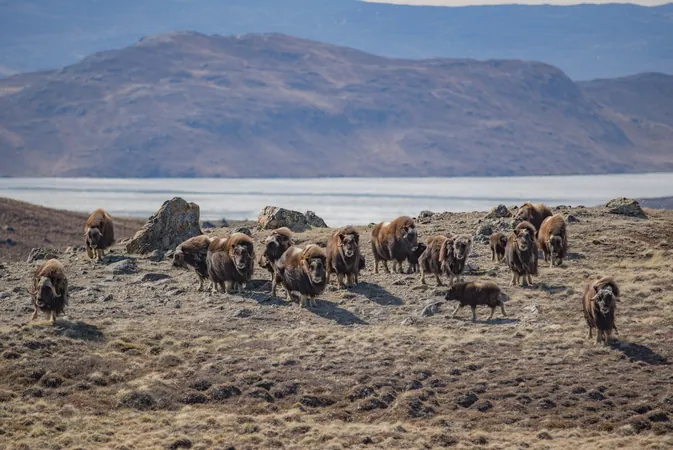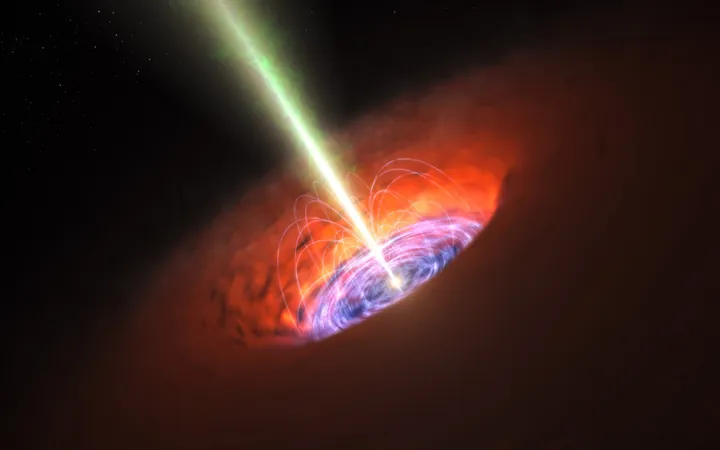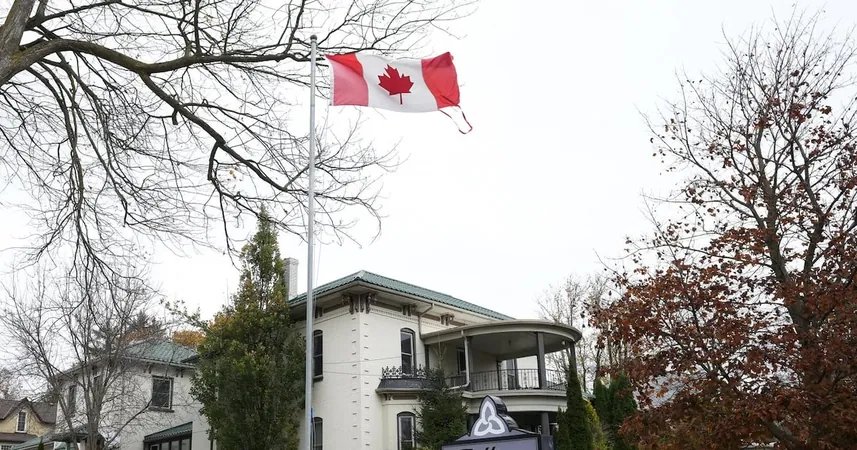
The Unexpected Heroes of Arctic Greening: Caribou and Muskoxen Drive Plant Growth Amid Climate Change
2024-11-12
Author: Emma
Introduction
A fascinating new study reveals that the Arctic greening phenomenon—often attributed primarily to climate change—is also significantly influenced by the presence of large grazing wildlife, including caribou and muskoxen. Conducted by researchers at the University of California, Davis, this research underscores the critical role these herbivores play in shaping plant phenology and abundance within the fragile Arctic ecosystem.
The Study
Published in the journal PNAS Nexus, the study sheds light on how these majestic grazers impact the emergence and growth of Arctic plants, an aspect frequently overlooked in climate discussions. With the Arctic warming more rapidly than any other region on Earth, understanding the intricacies of plant interactions with grazing animals becomes increasingly vital.
As lead author Eric Post, a UC Davis professor and seasoned Arctic ecologist, explains, "Caribou and muskoxen influence not just the emergence of plant life, but also their abundance throughout the growing season." This finding challenges the traditional understanding that primarily views plant availability as a determinant of herbivore health and productivity. Instead, the study suggests a reciprocal relationship where herbivores, in fact, shape plant growth dynamics.
Insights from a Long-Term Study
The research was based at a long-term study site in Kangerlussuaq, Greenland, where Post has examined wildlife and plant interactions for over two decades. The team conducted an innovative exclusion experiment, preventing caribou and muskoxen from grazing in specific areas from 2009 to 2017. They meticulously tracked the timing of spring green-up for nine plant species, contrasting those with and without the presence of these large herbivores.
Remarkably, the findings revealed that approximately 66% of the plant species gravitated towards earlier greening, and about 75% enjoyed greater abundance later in the season when grazers were present. Popular species such as arctic draba and gray willow thrived under grazing conditions. Conversely, certain plants, including dwarf birch and harebell, showed delayed emergence and, notably, dwarf birch did not increase in abundance even with grazing.
Understanding the Grazing Connection
The researchers are still unraveling the reasons behind these compelling findings. Post noted, "While we often think of herbivores benefiting from plant growth, it’s essential to recognize how their presence significantly impacts plant availability and productivity too."
This insight is particularly urgent, given the troubling trend of declining caribou populations across the Arctic. Many migratory tundra caribou (Rangifer tarandus) now face vulnerability, with their numbers plummeting by over 50% since the 1990s, as reported by the IUCN Red List.
In light of these trends, a separate recent study co-authored by Post emphasizes that maintaining sustainable herbivore populations could be a nature-based solution to combating climate change impacts more effectively than conventional methods like reforestation in the Arctic.
Conclusion: The Call for Ecological Balance
The study not only enriches our understanding of Arctic ecosystems but also calls for a closer examination of the interplay between herbivores and plant life amid a rapidly warming climate. The crucial connection between grazing wildlife and plant growth highlights the importance of preserving these species as integral players in the Arctic's ecological narrative. As we grapple with climate change's effects, recognizing the role of caribou and muskoxen might be key to devising future conservation strategies and ensuring the resilience of this delicate ecosystem.
Stay tuned for further developments from this groundbreaking research that could reshape our approach to Arctic environmental conservation!









 Brasil (PT)
Brasil (PT)
 Canada (EN)
Canada (EN)
 Chile (ES)
Chile (ES)
 España (ES)
España (ES)
 France (FR)
France (FR)
 Hong Kong (EN)
Hong Kong (EN)
 Italia (IT)
Italia (IT)
 日本 (JA)
日本 (JA)
 Magyarország (HU)
Magyarország (HU)
 Norge (NO)
Norge (NO)
 Polska (PL)
Polska (PL)
 Schweiz (DE)
Schweiz (DE)
 Singapore (EN)
Singapore (EN)
 Sverige (SV)
Sverige (SV)
 Suomi (FI)
Suomi (FI)
 Türkiye (TR)
Türkiye (TR)